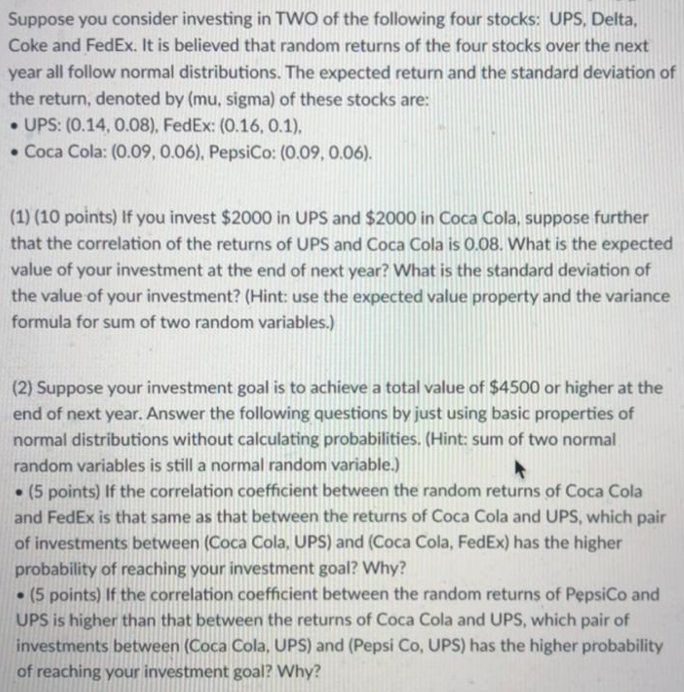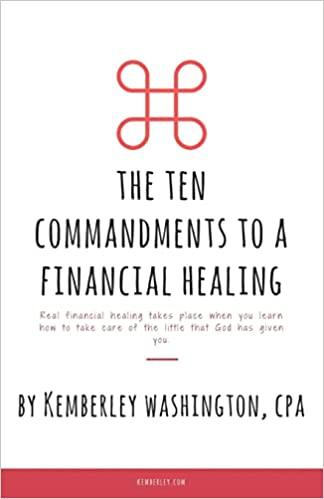
Suppose you consider investing in TWO of the following four stocks: UPS, Delta, Coke and FedEx. It is believed that random returns of the four stocks over the next year all follow normal distributions. The expected return and the standard deviation of the return, denoted by (mu, sigma) of these stocks are: UPS: (0.14, 0.08), FedEx: (0.16, 0.1). Coca Cola: (0.09, 0.06), PepsiCo: (0.09, 0.06). (1) (10 points) If you invest $2000 in UPS and $2000 in Coca Cola, suppose further that the correlation of the returns of UPS and Coca Cola is 0.08. What is the expected value of your investment at the end of next year? What is the standard deviation of the value of your investment? (Hint: use the expected value property and the variance formula for sum of two random variables.) (2) Suppose your investment goal is to achieve a total value of $4500 or higher at the end of next year. Answer the following questions by just using basic properties of normal distributions without calculating probabilities. (Hint: sum of two normal random variables is still a normal random variable.) (5 points) If the correlation coefficient between the random returns of Coca Cola and FedEx is that same as that between the returns of Coca Cola and UPS, which pair of investments between (Coca Cola, UPS) and (Coca Cola, FedEx) has the higher probability of reaching your investment goal? Why? (5 points) If the correlation coefficient between the random returns of PepsiCo and UPS is higher than that between the returns of Coca Cola and UPS, which pair of investments between (Coca Cola, UPS) and (Pepsi Co, UPS) has the higher probability of reaching your investment goal? Why? Suppose you consider investing in TWO of the following four stocks: UPS, Delta, Coke and FedEx. It is believed that random returns of the four stocks over the next year all follow normal distributions. The expected return and the standard deviation of the return, denoted by (mu, sigma) of these stocks are: UPS: (0.14, 0.08), FedEx: (0.16, 0.1). Coca Cola: (0.09, 0.06), PepsiCo: (0.09, 0.06). (1) (10 points) If you invest $2000 in UPS and $2000 in Coca Cola, suppose further that the correlation of the returns of UPS and Coca Cola is 0.08. What is the expected value of your investment at the end of next year? What is the standard deviation of the value of your investment? (Hint: use the expected value property and the variance formula for sum of two random variables.) (2) Suppose your investment goal is to achieve a total value of $4500 or higher at the end of next year. Answer the following questions by just using basic properties of normal distributions without calculating probabilities. (Hint: sum of two normal random variables is still a normal random variable.) (5 points) If the correlation coefficient between the random returns of Coca Cola and FedEx is that same as that between the returns of Coca Cola and UPS, which pair of investments between (Coca Cola, UPS) and (Coca Cola, FedEx) has the higher probability of reaching your investment goal? Why? (5 points) If the correlation coefficient between the random returns of PepsiCo and UPS is higher than that between the returns of Coca Cola and UPS, which pair of investments between (Coca Cola, UPS) and (Pepsi Co, UPS) has the higher probability of reaching your investment goal? Why







